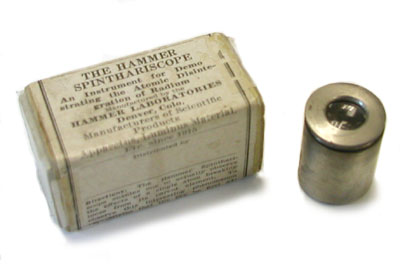Spinthariscopes
William Crookes and the Turbulent Luminous Sea
This article originally appeared in the Health Physics Society Newsletter.
London, 1903. Sir William Crookes, the very picture of Victorian elegance, was entertaining himself by observing the fluorescence that alpha rays from radium produced on a zinc sulfide screen (Romer 1960). But accidents happen, and Crookes spilled some of the radium. Eager to locate and recover it, Crookes inspected the screen under a microscope. And what he saw astonished him! Rather than the expected uniform glow, he observed discrete flashes of light—each flash produced by an individual alpha particle!
Inspired, Crookes built an amazingly simple device that provided a convenient way to view these scintillations. As he described its construction in The Chemical News (Crookes 1903): "fit the [zinc sulfide] blende screen at the end of a brass tube with a speck of radium salt in front of it... about a millimeter off,... a lens at the other end."
The position of the radium, affixed at the end of a needle, could be adjusted by means of a thumbscrew. Crookes described the effect of such an adjustment as follows: "on bringing the radium nearer the screen the scintillations become more numerous and brighter, until when close together the flashes follow each other so quickly that the surface looks like a turbulent, luminous sea."
Such a miraculous instrument required a suitably wondrous name and Crookes obliged: "I propose to call this little instrument the Spinthariscope from the Greek word scintillation." To Lawrence Badash (1964), it was only natural that the eloquent Sir William chose the name from Homer's Hymn to the god Apollo.
Crookes' spinthariscope made its first public appearance at a special soiree of the British Royal Society, May 15, 1903. The creme de la creme of the social and scientific elite were there to rub shoulders and take in the spectacular exhibits on display, e.g. recent developments in wireless telegraphy, poisonous sea-snakes, and archeological expeditions in Crete. But it was the spinthariscope, the piece de résistance, that lit up that star-studded evening (Keller 1983).
Soon everyone had to have one. Gentlemen and ladies carried them in pockets or purses, ready to bring them out at an opportune moment and demonstrate the latest in atomic instrumentation. Children received spinthariscopes as presents—no doubt leading to many a career in the sciences.
Even today, most of us think of the spinthariscope as a childhood toy (e.g., the Lone Ranger Atom Bomb Ring). But the spinthariscope was far more—it was the first radiation counter! Earlier devices for measuring radiation (e.g., photographic plates, electrometers, electroscopes) were integrating instruments, but the spinthariscope detected individual decay events!
The spinthariscope used in scientific investigations was quite different from what Crookes had described in The Chemical News—a microscope, not a hand-held lens, was employed to visualize the scintillations. Furthermore, its use was far from entertaining—counting scintillations was difficult, tedious work. Long periods of adaptation in the dark were required before the researcher was ready. And once begun, the counting was extremely hard on the eyes. One or two minute counts with long breaks in between were the rule.
Despite its difficulty of use, the spinthariscope proved its worth.
It was the spinthariscope that seems to have permitted the first application of coincidence counting in the nuclear sciences (Rutherford et al, 1930). In 1924, Geiger and Werner simultaneously counted scintillations on the same zinc sulfide screen by employing a microscope with dual oculars. They independently registered their counts by marking a moving tape. Geiger's marks appeared on one edge of the tape while Werner's appeared on the other. The number of counts by Geiger can be designated CG, and the counts from Werner can be CW. The number of times they simultaneously observed a scintillation (i.e., their marks appeared immediately opposite each other on the tape) can be designated CGW. If N is the actual number of scintillations on the screen and the counting efficiencies of Geiger and Werner are EG and EW respectively, it follows that:
CG = EG N
CW = EW N
CGW = EG EW N
Now, with the following equation, Geiger and Werner were able to calculate the actual number of scintillations on the screen, and hence, the number of alpha particles striking the screen!
|
N |
CG CW |
|
|
= |
||
|
CGW |
That's not all! Ernest Rutherford and Hans Geiger also used the spinthariscope to measure the charge on an alpha particle—work that provided crucial evidence that the alpha particle was a helium nucleus. Their measurements also helped refine the accepted values for Avogadros number and the charge on an electron. In addition, it was a chance observation with a spinthariscope that led Rutherford to propose his nuclear model of the atom!
The spinthariscope of William Crookes—QUITE A TOY!
References
- Badash, L. The Early Developments in Radioactivity, with Emphasis on Contributions from the United States. Ph.D. dissertation, Yale University; 1964.
- Crookes, W. Certain Properties of the Emanations of Radium. Chemical News; Vol. 87:241; 1903.
- Keller, A. The infancy of atomic physics: Hercules in his cradle. Clarendon Press; Oxford; 1983.
- Romer, A. The Restless Atom. Doubleday & Company, Inc.; Garden City; 1960.
- Rutherford, E., Chadwick, J., and Ellis, C.D. Radiations from Radioactive Substances. Cambridge University Press; Cambridge; 1930.
-
Chemcraft Aluminum Spinthariscope Chemcraft Aluminum Spinthariscope
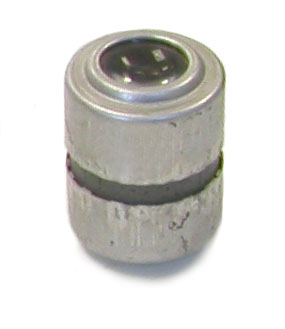
-
Clarkstan Alpha Counter Clarkstan Alpha Counter
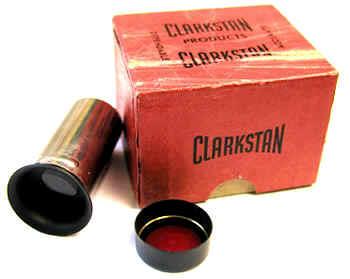
-
Crookes Spinthariscope Crookes Spinthariscope
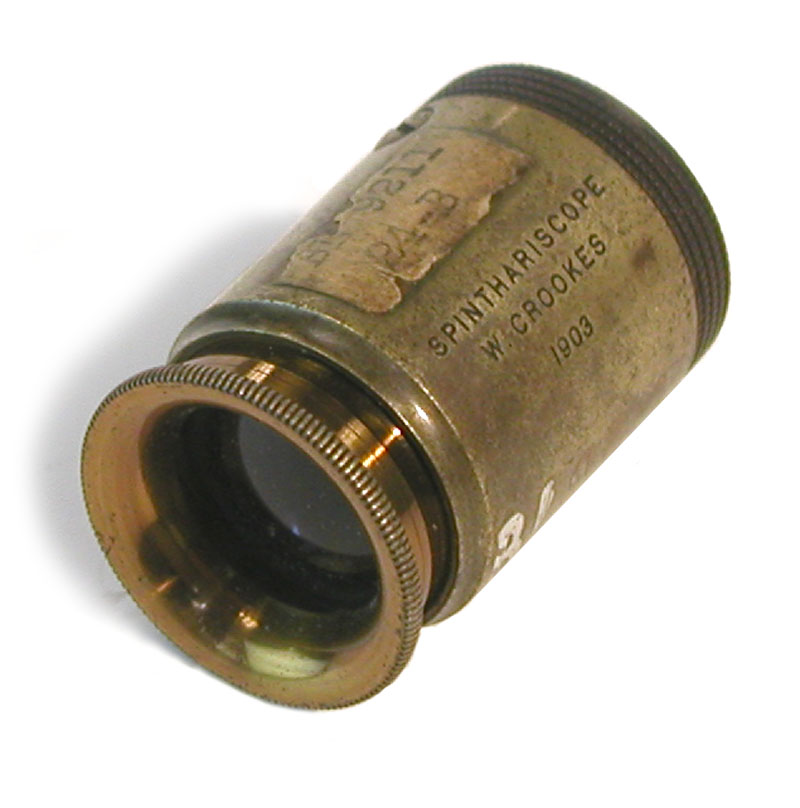
-
Glew's Scintilloscope Glew's Scintilloscope
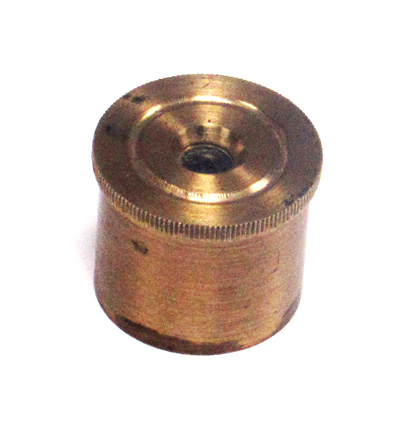
-
H. J. Gray Spinthariscope H. J. Gray Spinthariscope
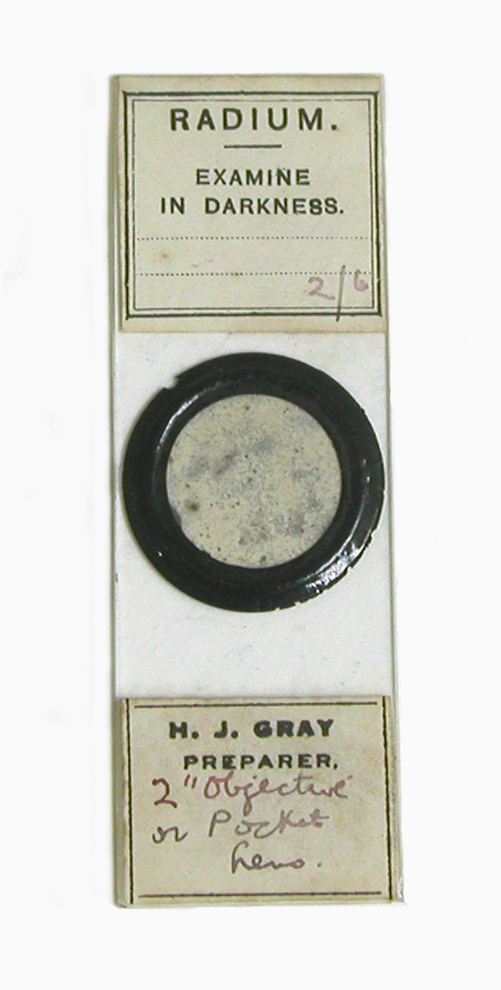
-
Lone Ranger Atom Bomb Ring Spinthariscope Lone Ranger Atom Bomb Ring Spinthariscope
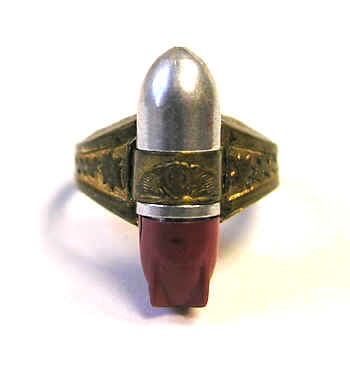
-
Luma Inc., Spinthariscope Luma Inc., Spinthariscope
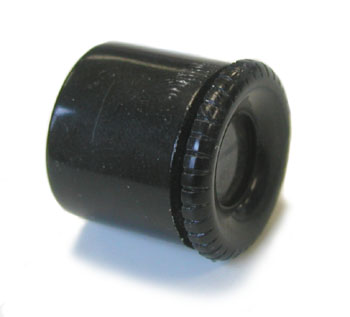
-
Radium Chemical Company Spinthariscope Radium Chemical Company Spinthariscope
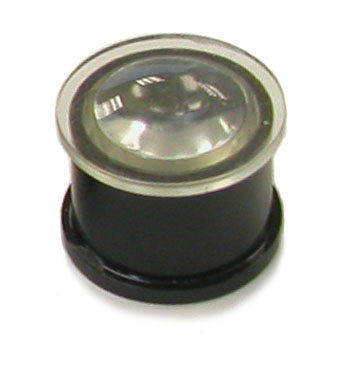
-
Sam Lind's Spinthariscope Sam Lind's Spinthariscope
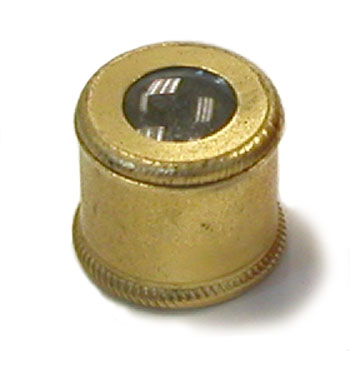
-
Spinthariscope of Unknown Manufacture Spinthariscope of Unknown Manufacture
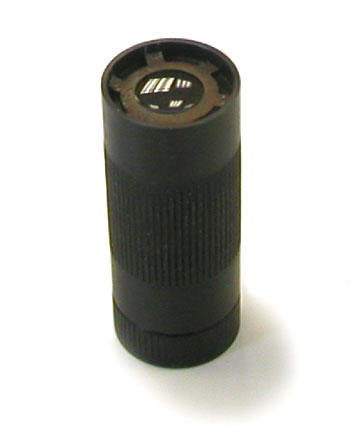
-
The Hammer Spinthariscope The Hammer Spinthariscope
